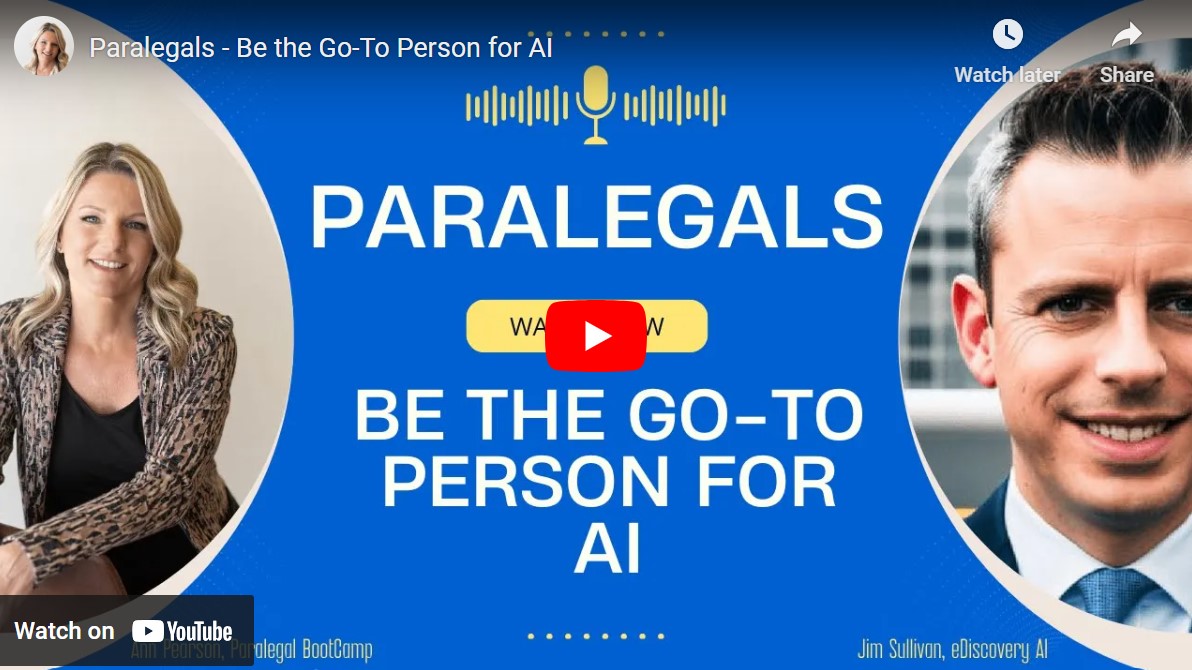Introduction:
In our previous blog posts, we embarked on a journey exploring the transformative potential of Language Model Artificial Intelligence (LLM AI) in the realm of eDiscovery. We introduced the concept, discussed the workflow, and now it’s time to delve deeper into the inner workings of large language models. In this blog post, we will unravel the secrets behind how these models are trained, what they understand, and what kind of information is essential in creating effective instructions. Let’s demystify the powerhouse that drives eDiscovery automation.
Training a Large Language Model:
Large language models are trained using a massive amount of data from diverse sources. The process typically involves the following steps:
a. Corpus Selection: A vast and varied corpus of text is curated from sources like books, articles, websites, and more. This corpus helps expose the model to a broad range of vocabulary, sentence structures, and contextual information.
b. Pretraining: The model undergoes pretraining, where it learns to predict the next word in a sentence based on the context provided. This phase allows the model to grasp language patterns, grammar, and semantic relationships.
c. Fine-tuning: After pretraining, the model is fine-tuned on specific tasks, such as question-answering or text completion, using a dataset carefully labeled by human reviewers. Fine-tuning helps the model specialize in particular domains and tasks, such as eDiscovery predictive coding.
Language Comprehension:
Large language models possess an impressive ability to understand and generate text. They learn contextual relationships between words and can capture complex linguistic nuances. However, it is important to note that they primarily rely on patterns and statistical associations present in the training data rather than genuine human understanding.
a. Semantic Understanding: Through exposure to a wide variety of text, large language models acquire an understanding of meaning and context. They can infer relationships, understand synonyms, and grasp semantic concepts.
b. Contextual Understanding: Large language models excel at interpreting text based on the context provided. They consider the preceding words or sentences to generate more accurate classifications or completions.
c. Limitations: While large language models possess remarkable capabilities, they can sometimes generate responses that sound plausible but are factually incorrect. It is essential to exercise caution and validate their outputs with human expertise.
Creating Effective Instructions:
When leveraging eDiscovery AI, the creation of effective instructions plays a crucial role in guiding the model’s classifications. Here are key considerations:
a. Relevance and Specificity: Instructions should be precise and tailored to the context of the case. Incorporate relevant legal terminology, specific industry terms, and keywords to focus the model’s attention on pertinent aspects of the documents.
b. Balanced Examples: Ensure that instructions include both positive (relevant) and negative (irrelevant) examples of text or criteria. A well-rounded and complete set of instructions helps eDiscovery AI understand the nuances and characteristics of relevant and irrelevant documents.
c. Iterative Refinement: Begin with a set of initial instructions and iteratively refine them based on the model’s responses. Analyze the model’s outputs, evaluate recall and precision metrics, and adjust the instructions accordingly to enhance performance.
Conclusion:
Understanding how large language models work is crucial for harnessing the power of eDiscovery AI. By comprehending their training process, the scope of their language comprehension, and the essential elements of effective instructions, legal professionals can optimize the use of eDiscovery AI in document review. Stay tuned for our next blog post, where we will explore best practices for fine-tuning large language models to achieve exceptional performance in eDiscovery.
While large language models offer remarkable potential, it’s important to remember that they are tools that complement legal expertise. Human validation and oversight are essential in ensuring the accuracy and reliability of their outputs.




